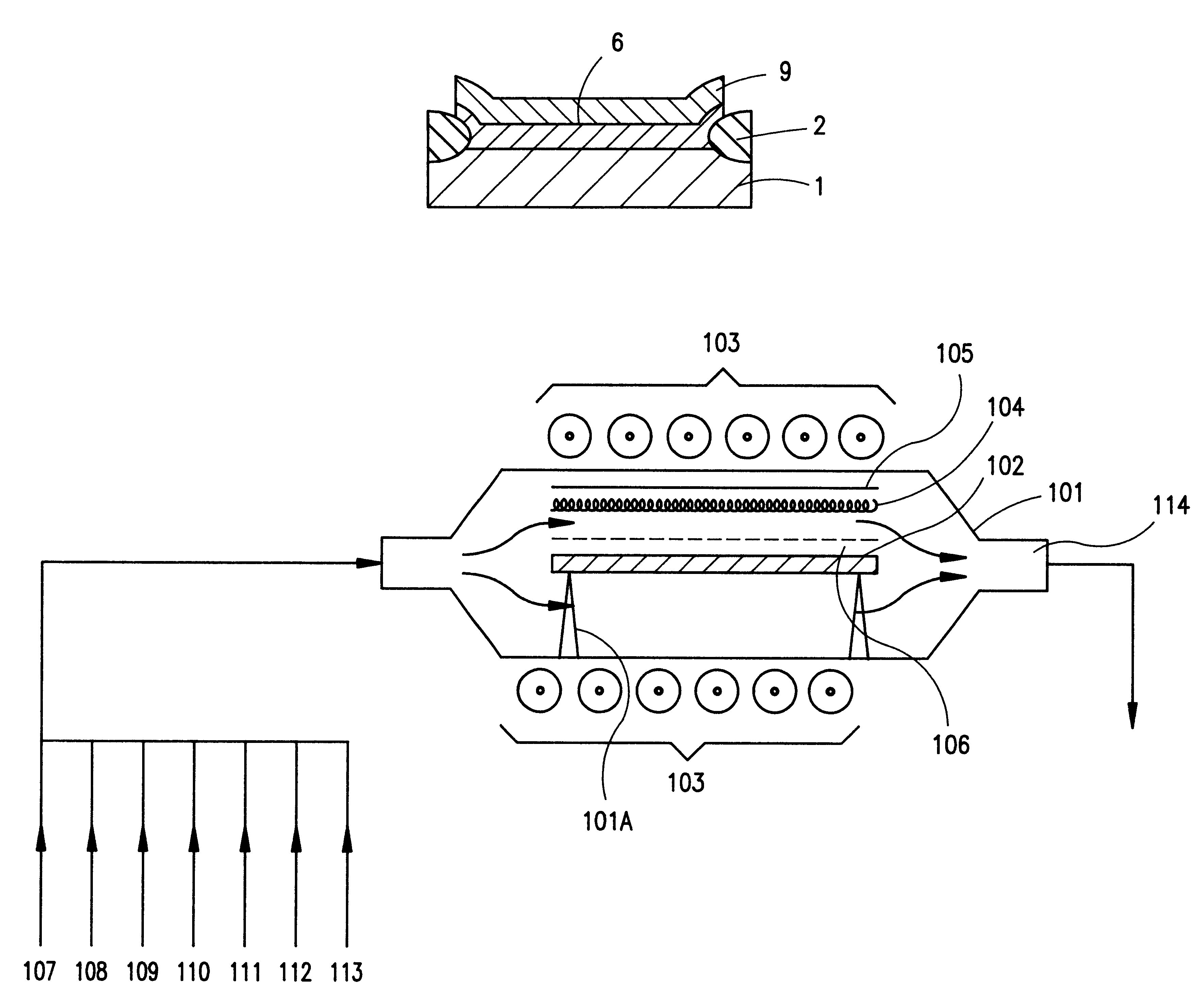Method for forming an insulating film on semiconductor substrate surface and apparatus for carrying out the method
a technology of insulating film and semiconductor substrate, which is applied in the direction of electrical equipment, semiconductor devices, electric discharge tubes, etc., can solve the problems of insufficient improvement of silicon dioxide film quality, small amount of nitrogen atoms incorporated into the formed oxynitride film, and failure to form thin high-quality oxynitride films with good controllability and reproducibility. , to achieve the effect of good controllability, good controllability, and efficient operation
- Summary
- Abstract
- Description
- Claims
- Application Information
AI Technical Summary
Benefits of technology
Problems solved by technology
Method used
Image
Examples
first embodiment
FIGS. 1A to 1F show a process of forming an insulating film on a semiconductor substrate according to the present invention. In the present embodiment, an MOS capacitor is formed on a silicon substrate, which is an example of the semiconductor substrate.
(1) An isolation region 2 and an active region 4 were formed on a silicon substrate 1 through use of a known selective oxidation technique. A native oxide film 8 was present on the surface of the active region 4 (FIG. 1A). Specifically, the silicon substrate 1 was a p-type (100) substrate having a resistivity of 10-15 .OMEGA.cm. The isolation region 2 was an LOCOS (local oxidation of silicon) oxide film having a thickness of 500 nm.
(2) In order to clean the active region 4, a wafer was cleaned by a known RCA cleaning method (W. Kern, D. A. Plutien: RCA Review, 31, pp. 187, 1970). Subsequently, the wafer was immersed in a dilute HF solution (0.5 vol. % aqueous solution of HF) for 5 minutes, thereby removing the native oxide film 8 fro...
second embodiment
Next, the present invention will be described.
FIG. 10 shows a schematic configuration of an apparatus for forming an insulating film on the surface of a semiconductor substrate.
As shown in FIG. 10, in a horizontally elongated chamber 101, a semiconductor substrate 102 is supported horizontally on support pins 101A. The chamber 101 is formed of stainless steel SUS 316 and has a volume of about 18000 cm.sup.3.
A thermoelectron source (tungsten filament) 104, a grid electrode 105, and a mesh electrode 106 are provided at an upper portion of the chamber 101. A voltage can be applied to both ends of the filament 104 so as to heat the filament 104 in order to release thermoelectrons from the heated filament 104. A voltage can be applied to the grid electron 105 so as to accelerate thermoelectrons released from the filament 104.
A voltage can also be applied to the mesh electrode 106 and the semiconductor substrate 102. Through adjustment of the applied voltages, incident charge on the surfa...
PUM
| Property | Measurement | Unit |
|---|---|---|
| thickness | aaaaa | aaaaa |
| temperature | aaaaa | aaaaa |
| temperature | aaaaa | aaaaa |
Abstract
Description
Claims
Application Information
 Login to View More
Login to View More - R&D
- Intellectual Property
- Life Sciences
- Materials
- Tech Scout
- Unparalleled Data Quality
- Higher Quality Content
- 60% Fewer Hallucinations
Browse by: Latest US Patents, China's latest patents, Technical Efficacy Thesaurus, Application Domain, Technology Topic, Popular Technical Reports.
© 2025 PatSnap. All rights reserved.Legal|Privacy policy|Modern Slavery Act Transparency Statement|Sitemap|About US| Contact US: help@patsnap.com



